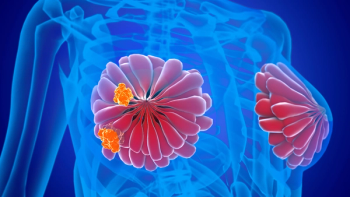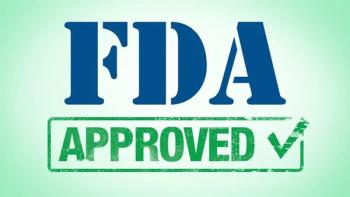
FDA Approves Subcutaneous Daratumumab in High-Risk Smoldering Myeloma
The FDA has approved subcutaneous daratumumab and hyaluronidase-fihj for use in patients with high-risk smoldering multiple myeloma.
The FDA has approved subcutaneous daratumumab and hyaluronidase-fihj (Darzalex Faspro) for use in patients with high-risk smoldering multiple myeloma, marking the first approved agent in smoldering multiple myeloma.1
The monoclonal antibody’s approval is based on findings from the randomized, open-label phase 3 data from the
“Therapies like subcutaneous daratumumab offer a promising proactive approach to delaying or even preventing the progression of smoldering myeloma to active multiple myeloma,”
Patients enrolled in AQUILA (n = 390) were randomly assigned to receive either 1800 mg/30,000 units of subcutaneous daratumumab once a week from weeks 1 to 8, once every 2 weeks in weeks 9 to 24, and once every 4 weeks from weeks 25 to 39 or up to 36 months or until multiple myeloma diagnosis or unacceptable toxicity.
Of enrolled patients, 41% have 2 or more of the following criteria for high-risk
- Serum monoclonal protein level > 2 g/dL
- Involved-to-uninvolved serum-free light chain ratio > 20
- Bone marrow plasma cells > 20%
Does Subcutaneous Daratumumab Reduce the Risk of Progression in Smoldering Multiple Myeloma?
Findings from AQUILA were presented at the 2024 American Society of Hematology Annual Meeting and Exposition and published simultaneously in the New England Journal of Medicine.2,3 The results of this analysis were later presented at the
Treatment with subcutaneous daratumumab reduced the risk of progression or death compared to active monitoring by 51% (HR, 0.49; 95% CI, 0.36-0.67; P < .001).
At 60 months, overall survival rates were 93.0% and 86.9% in the daratumumab and active monitoring arms, respectively, ultimately reducing the risk of death 48% (HR, 0.52; 95% CI, 0.27-0.98). Daratumumab also generated an overall response rate of 63.4% compared to 2.0% for active monitoring (P < .001).
Treatment-emergent adverse events (TEAEs) grade 3 or higher were reported in 40.4% of patients receiving daratumumab, vs 30.1% of the active monitoring arm. The most common TEAE was hypertension (5.7% vs 4.6%, respectively), and the most common serious TEAE was pneumonia (3.6% vs 0.5%, respectively).
In July 2025, an
What Should Nurses and Advanced Practice Providers Know About Administering Subcutaneous Daratumumab?
In a guide for nurses on
Subcutaneous daratumumab’s label warns that patients may experience hypersensitivity and other administration reactions, cardiac toxicity in patients with light chain amyloidosis, infections, neutropenia, thrombocytopenia, embryo-fetal toxicity, and interference with cross-matching and red blood cell antibody screening.
Subcutaneous daratumumab is recommended at 1800/30,000 units (1800 mg daratumumab and 30,000 units hyaluronidase).
For more information on subcutaneous daratumumab in multiple myeloma, keep up with our
References
- FDA approves daratumumab and hyaluronidase-fihj for high-risk smoldering multiple myeloma. FDA. November 6, 2025. Accessed November 6, 2025. https://www.fda.gov/drugs/resources-information-approved-drugs/fda-approves-daratumumab-and-hyaluronidase-fihj-high-risk-smoldering-multiple-myeloma
- US FDA Oncologic Drugs Advisory Committee votes in favor of the benefit-risk profile of DARZALEX FASPRO (daratumumab and hyaluronidase-fihj) for high-risk smoldering multiple myeloma. Johnson & Johnson. News release. May 20, 2025. Accessed June 20, 2025. https://www.jnj.com/media-center/press-releases/u-s-fda-oncologic-drugs-advisory-committee-votes-in-favor-of-the-benefit-risk-profile-of-darzalex-faspro-daratumumab-and-hyaluronidase-fihj-for-high-risk-smoldering-multiple-myeloma
- Dimopoulos MA, Voorhees PM, Schjesvold F, et al. Phase 3 randomized study of daratumumab monotherapy versus active monitoring in patients with high-risk smoldering multiple myeloma: primary results of the Aquila study. Blood. 2024;144(suppl 1):773. doi:10.1182/blood-2024-201057
Newsletter
Knowledge is power. Don’t miss the most recent breakthroughs in cancer care.




















































































